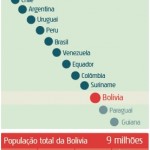interstitial fluid vs plasma25 december 2020 islamic date
evaluated dynamic changes in IG in rats using an implanted glucose sensor.Their results showed that IG was lower than BG when glucose was increasing, yet IG and BG were similar when glucose was declining. Interstitial fluid (IF) is created by transcapillary filtration and cleared by lymphatic vessels. Blood plasma is a yellowish liquid component of blood that holds the blood cells in whole blood in suspension. However, knowledge about the presence of useful biomarkers for health monitoring in ISF is still limited. Apa itu Interstitial Fluid 4. This is also referred to as blood plasma, is the amount of fluid inside the human blood vessel, and serves as the protein reserve of the human body. Interstitial fluid comes from the plasma in the capillaries. Lymph is a fluid similar in composition to blood plasma. Most of the other dissolved products such as nutrients and electrolytes occur in similar concentrations in both plasma and interstitial fluid. Interstitial fluid bathes the cells while plasma flows inside them. The ratio of plasma volume to interstitial fluid volume (PV/IF) was significantly lower in hypertensive patients (0.194 vs. 0.223, P <0.001). It is often not calculated as a fraction of the extracellular fluid, but it is about 2.5% of the total body water. Does interstitial fluid contain plasma? What is Edema. The arteries divide into narrower arterioles, which in turn divide into tiny capillaries within the tissues. Interstitial fluid is a thin layer of fluid which surrounds the body's cells. 2017-02-15 at 11:26 #17543. Fluid Exchange Processes in Tissues. 20.6 gIL, and the . Plasma and ISF were analyzed by high performance liquid chromatography. It is majorly composed of interstitial fluid. Interstitial fluid, or simply tissue fluid, is a mixture of water, ions, and small solutes that are forced out of the blood plasma by the systolic pressure created when the heart pumps. the fluid component of blood. This could not be explained only on the basis of the diminished plasma volume found in hypertensive patients (17.3 ml/cm of body height vs. 18.7 ml/cm, P <0.05), as three normal subjects with marked . Plasma ISF glucose equilibration model. The interstitium describes the fluid, proteins, solutes, and the extracellular matrix (ECM) that comprise the cellular microenvironment in tissues. Interstitial fluid also contains transcellular fluid [23]. The Intracellular Fluid (Icf) Is The Fluid Within Cells. The interstitial ECM has many connective cells and healthy proteins (such as collagen) involved in blood clotting and wound recovery. It includes blood plasma, aqueous humor, and lymphatic fluid. It is very similar to plasma. Hyper - cell shrivels Hypo - cell swells. Posts. It accounts for 55% of the body's total blood volume and about 20% of ECF. Plasma data were analyzed by use of compartmental methods. Arterial end Venous end Capillary Interstitial fluid is found in the body cells and body tissues. Interstitial fluid (IF) is part of the extracellular fluid (ECF) between cells. Renal Chapter 17 VPHYS Functions of Kidneys o regulate volume and components of ECF (plasma and interstitial fluid) vs filtering of blood plasma in urine o Regulate BP through volume of blood plasma o Regulate [waste products] in blood o Regulate concentration of electrolytes (Na +, K +, H +, HCO 3-& other ions) o Regulate pH of body fluids o Secrete erythropoietin (Hypoxia → ↑) Structure . It makes up for the absence of anionic proteins in the interstitial fluid. Interstitial fluid is 3/4 of ECF, and plasma water is 1/4 of ECF. The main difference between interstitial fluid and blood plasma is that interstitial fluid resides between tissue cells (Cook et al., 2019). ECFs are any body fluids that are not inside cells. Glucose measured in interstitial fluid (IG) may differ substantially from blood glucose (BG) values measured at the same time. 4. A macro scheme of fluid compartments around the cells (the intracellular fluid, the plasma, the interstitial fluid) As the human organism undergoes the process of metabolism, one of the byproducts of this is carbon dioxide (chemical formula CO2), which is made in the watery portion of the cell, called the intracellular fluid . However, white blood cells are present in order to combat any infections. But, sometimes, some of the plasma proteins remain in the interstitial fluid and become lymph which is part of the lymphatic system. The plasma is the fluid part of the blood. Different to traditional blood glucose measurement systems, systems for continuous glucose monitoring (CGM) measure glucose in interstitial fluid (ISF). Blood plasma is the fluid in which the platelets and blood cells are suspended. There is a constant exchange process going on between plasma and interstitial fluid. Lymph brings back proteins and excess interstitial fluid into the bloodstream. Interstitial Fluid. The comparison between rat and rabbit plasma and interstitial fluids (Table 2) reaffirms that absolute values for proteins are variable. It leaves the heart in the aorta. Além disso, mantendo o equilíbrio eletrolítico ajuda a proteger o corpo de infecções. accumulation of fluid within the interstitial spaces Can be local or systemic. Dermal interstitial fluid (ISF) is an underutilized information-rich biofluid potentially useful in health status monitoring applications whose contents remain challenging to characterize. Fluid in interstitial space, plasma, lymph, CSF, trans cellular fluid (in joints, pericardium, etc) Effect of placing cell in hyper vs hypo tonic solution. It also consists of a water solvent containing sugars, fatty acids, amino acids, coenzymes, hormones, neurotransmitters, white blood cells, and cell waste products. Interstitial chloride is slightly higher. after lying down to calculatethe composition of added. Lymph, which is part of the ECF, is interstitial fluid that is collected in the lymphatic vessels and then returned to the plasma compartment. plasma vs interstitial fluid; Rated 3.6 /5 based on 36 customer reviews 16 May, 2017. what is the difference between a simple and differential stain what does the area under a curve represent swearing on the bible in court an overabundance of the neurotransmitter norepinephrine is most likely to be associated with: . It is the smallest component of extracellular fluid, which also includes interstitial fluid and plasma. Call for a new LOINC Code! Water is the main component of body fluids. Interstitial Fluid Definition. This space is where much of chemical reactions occur, as such, it is important to maintain an appropriate osmolality. i.e., the fluid that lies in the interstitial spaces of all body tissues, which is collected through lymph capillaries. Glucose readings through interstitial fluid CGM devices are active throughout the day and night. Direct measurements of interstitial fluid glucose levels were obtained at different levels of plasma glucose and insulin using microdialysis and compared to sensor and plasma glucose readings. It therefore seems reasonable to assume that microcirculatory fluiddynamicsare alsovariablebetweenrat andrabbit. Interstitial fluid is thought to be produced as a result of rhythmic alterations in arteriolar . Key Areas Covered 1. Reconstruction of Glucose in Plasma from Interstitial Fluid Continuous Glucose Monitoring Data: Role of Sensor Calibration Facchinetti J Diabetes Sci Technol Vol 1, Issue 5, September 2007 www.journalofdst.org The model, displayed in Figure 3, is linear and time The interstitial fluid (ISF) is another component that fills the rest of the ECM space providing a vital service for the maintenance of life. Recent technical advances in the extraction of dermal interstitial fluid (ISF) have stimulated interest in using this rather unexploited biofluid as an alternative to blood for detection and prediction of disease. Start studying Electrolyte composition of blood plasma, interstitial fluid and intracellular fluid. Extracellular Fluid can be divided into two major subcompartments: Interstitial Fluid and blood plasma. The assumption is that glucose levels in blood and ISF are practically the same and that the information provided can be used interchangeably. Hence, oncotic pressure causes the removal of wastes from the tissues. This topic has 1 reply, 1 voice, and was last updated 1 week, 2 days ago by Benjamin Salisbury. This is the mechanism of forming lymph in the lymphatic system - The lymphatic system is an accessory route, through which fluids can pass from the interstitial space to the blood. The extracellular fluid It is all the liquid present in an organism and located outside the cells. Is plasma a type of interstitial fluid? Oncotic pressure causes the movement of interstitial fluid into the capillaries at their venular end. 4.2.2.2 Intravascular Fluid. 1 Plasma ISF glucose equilibration model. Whilst interstitial is very rarely mentioned in every day conversation, it plays an important role in our body and makes almost 40% of the water in our […] Interstitial fluid has a very specific composition, compared with plasma, and is responsible for providing the oxygen and nutrients required by the metabolically active Sertoli and germ cells, which are otherwise located in an avascular environment. The main difference between plasma and interstitial fluid is that plasma contains more proteins whereas interstitial fluid contains fewer proteins. 5% of ECF. It plays an important role in helping cells stay healthy, both by bringing them nutrition and by flushing away their waste, and is one of the main ways the body promotes a . Intracellular fluid Extracellular fluid Interstitial fluid Plasma Other WATER (38.5 kg; 84.7 lbs) The body composition (by weight, averaged for both sexes) and major body fluid compartments of a 70-kg individual. It's helpful to think about it like a rollercoaster where the front car is the blood glucose (BG) and the car in the back is the sensor glucose . Home › Forums › LOINC Development › Other LOINC Enhancements › Blood Glucose: Plasma vs Interstitial Fluid. Exchange of metabolites, gases and waste products takes place through the fluid. Blood contains to red blood cells, white blood cells, platelets and plasma which constitutes water, proteins, hormones, O_2, CO_2, glucose, salt, enzymes. We also cover some of the functions of the extracellular matrix as. Interstitial fluid contains metabolic wastes and carbon dioxide from the tissue cells. Interstitial fluid also contains transcellular fluid [23]. Ce separă . interstitial fluid. In this video we discuss what is the extracellular matrix and what is interstitial fluid. Protein binding and lipophilicity were determined. The two main components of ECF are plasma and interstitial fluid (IF). The interstitial fluid is essentially comparable to plasma.The interstitial fluid and plasma make up about 97% of the ECF, and a small percentage of this is lymph.. Interstitial fluid is the body fluid between blood vessels and cells, containing nutrients from capillaries by diffusion and holding waste products discharged out by cells due to metabolism. plasma Componenta lichidă a sângelui, de culoare paie / galben pal, care ține în mod normal celulele sanguine din sânge integral în suspensie. Answer (1 of 3): Lymph is an interstitial fluid that has made it to a lymph channel. Lymph is filtered by the lymph glands along the way back to the Vena Cava, Interstitial fluid is the potty fluid of the cells (Lymph in a rough form ) Lymph has little protein in it (is watery) while plasma is r. Plasma is a mixture of water and many other constituents, which carry blood cells and oxygen to various parts of the body. Persamaan Antara Plasma dan Cairan Interstisial 5. It is derived from blood plasma as fluids pass through capillary walls at the arterial end. Interstitial fluid was collected with an ultrafiltration device. Abstract Objective—To compare plasma (total and unbound) and interstitial fluid (ISF) concentrations of doxycycline and meropenem in dogs following constant rate IV infusion of each drug. Plasma has many more protein molecules within it. Extracellular Fluid or Extracellular Fluid volume usually denotes all body fluid that is outside of cells. Ringkasan. The extracellular fluid comprises approximately 20% of total body weight and further subcategorizes as plasma at approximately 5% of body weight and interstitial space which is approximately 12% of body weight. Learn vocabulary, terms, and more with flashcards, games, and other study tools. These are the (1) intracellular fluid compartment, (2) interstitial fluid, and (3) plasma. Here . Thus, the difference in composition is that interstitial fluid is blood plasma without the protein platelets. Transcellular fluid is the part of total body water within the epithelial-lined spaces. As nouns , extracellular fluid is a hypernym of interstitial fluid; that is, extracellular fluid is a word with a broader meaning than interstitial fluid and interstitial fluid is a type of extracellular fluid with the definitions: liquid found between the cells of the body that . The physical barrier separating the intracellular fluid compartment (i.e., cytoplasm) and the interstitial fluid is the cell plasma membrane. Differbetween Garbage; Scheduling; Glottis; Percent; Oled; Risk; Parasites; Main page; Fluid; interstitial fluid vs plasma The lym-phatic system usually returns excess fluids and osmotically active plas-ma proteins to the circulation. But: there is enough protein anionic charge in the plasma to repel a significant amount of chloride, and so at equilibrium an extra 5mmol/L or so of chloride hangs out in the interstitial compartment. (2pts) (MO 1,2) The interstitial fluid is the space between cells and outside the blood vessels, but not in the blood. Interstitial fluid has become useful in the monitoring of glucose levels in people with diabetes. Age will decrease the amount of fluid the body holds. Apa itu Plasma? Interstitial fluid represents the fluid in which all the cells of the body are immersed and corresponds to what is called the "internal . But if the lymphatic system is obstructed, fluid and plasma proteins accumulate in the interstitial space. There is a 3-5 mg/mL difference between arterial and venous levels, with higher differences in the postprandial state.1Levels are higher in the arterial blood because some of the glucose diffuses from the plasma to interstitial fluid (IF) as blood circulates through the capillary system. and composition of plasma in 20 subjects before and. Lymph: It is an interstitial fluid, present between the cells of a tissue. Its alterations are fundamental to changes in cell function in inflammation, pathogenesis, and cancer. The hyperinsulinemic clamp technique was used to produce an increase in plasma insulin levels and to vary plasma glucose concentrations. Blood plasma contains water, ions, nutrient molecules (glucose, amino acids, protein, lipids), and waste molecules. It is the smallest part of the extracellular liquid, composed of interstitial fluid and plasma. Lymph is a tissue fluid. Dermal interstitial fluid (ISF) is an underutilized information-rich biofluid potentially useful in health status monitoring applications whose contents remain challenging to characterize. Model describing plasma (C 1) and interstitial fluid (ISF; C 2) glucose kinetics assuming glucose equilibrates by diffusion (D =k 21 V 1 =k 12 V 2) and is cleared from ISF by tissue surrounding the sensor (clearance =k 02 V 2), where V 1 and V 2 represent plasma volume and ISF distribution volume seen by the sensor, respectively. It includes interstitial fluid, plasma, and the small amounts present in some special compartments. Este lichidul interstițial plasmatic? Plasma adalah salah satu dari dua komponen cairan ekstraseluler. Interstitial fluid also referred to as tissue fluid, is the liquid that surrounds body cells in an organism. Perbandingan Berdampingan - Plasma vs Cairan Interstisial dalam Bentuk Tabular 6. It is the main component of the extracellular fluid, which also includes plasma and trans-cellular fluid. As the interstitial fluid begins to accumulate, it is picked up and removed by tiny lymphatic vessels and returned to the blood. Interstitial Fluid: Interstitial fluid (or tissue fluid, or intercellular fluid) is a solution which bathes and surrounds the cells of multicellular animals. Albumin contributes around 75% of the plasma oncotic pressure. These substances can be transported from the blood capillaries to the interstitial fluid to the cells and back again by diffusion, filtration, osmosis, and active transport. Blood that is red fluid flows through arteries, veins & capillaries. Is interstitial fluid intracellular or extracellular? the overall hypothesis is that treatment with the sglt2 inhibitor ertugliflozin induces a differential regulation in interstitial fluid vs plasma volume, with more reduction of the volume from the interstitial fluid than from the circulating plasma volume, which results in ertugliflozin inducing more potent congestion relief with minimal impact … Glucose (circles)is assumed to move from plasma to interstitial fluid in proportion to the concentration in each compartment (proportionality constants K 12 and K 21), to be subsequently cleared from the interstitial fluid by cellular . The estimated proteinconcentrationwas. . Blood plasma is the second component of the ECF. Transcellular Fluid. Interstitial fluid is the fluid that surrounds the cells of your tissue below your skin, and usually glucose moves from your blood vessels and capillaries first and then into your interstitial fluid. Interstitial fluid is similar to blood plasma since the two continuously exchange substances across capillary walls. Extracellular Fluid: Extracellular fluid (ECF) is fluid in the body that is not located inside cells. Interstitial fluid, also known as tissue fluid, is a liquid — made mostly of water — that fills up the space between the cells of most organisms, including human beings. Viewing 2 posts - 1 through 2 (of 2 total) Author. Reach et al. Tissue fluid contains to O_2, CO_2, sugars, salts, amino acids, hormones, coezymes & white blood cells. Lymph contains to CO_2, proteins, glucose and white blood cells. Fluido intersticial As células do corpo são cercadas pelo fluido intersticial. Transcellular fluid is the portion of total body water contained within the epithelial-lined spaces. space are greater than those returning fluid to the capillaries. Oleh karena itu, plasma atau plasma darah adalah cairan yang terdapat di dalam sistem . Results: A significant difference was found between ISF and plasma total doxycycline concentrations. This is also referred to as blood plasma, is the amount of fluid inside the human blood vessel, and serves as the protein reserve of the human body. Once you separate all the cellular components (including platelets ) from whole blood, what remains will be approximately 92 percent liquid phase or about 88 percent interstitial fluid plus about four percent plasma which makes 94 percent of total body water This means that plasma and interstitial fluid COPvalues will also differ. Knowledge gained from clinical studies, for example, on the impact of metabolic control on diabetes-related complications, is based on such measurements. The key difference between plasma and interstitial fluid is that the plasma is the fluid in which the blood cells and platelets suspend while the interstitial fluid is the fluid that surrounds the cells in an organism. ECF has a volume of 15 L and contains interstitial. Here . lichid interstițial o soluție care scaldă și înconjoară celulele animalelor multicelulare; numit și fluid tisular. The interstitial fluid is a compartment that can be considered as a continuous liquid phase, located between the other two compartments that are the plasma, from which it is separated by the endothelium of the capillaries, and the intracellular fluid from which the external cell membranes separate it. It is the liquid part of the blood that carrie. Interstitial fluid is the body fluid between blood vessels and cells, containing nutrients from capillaries by diffusion and holding waste products discharged out by cells due to metabolism. The plasma contains a high number of proteins, while interstitial fluid contains low amounts. Uma pequena diferença nas concentrações de catiões e aniões pode ser encontrada no plasma do que o líquido intersticial. Animals—6 adult Beagles. Glucose (circles) is assumed to move from plasma to interstitial fluid in proportion to the concentration in each compartment (proportionality constants K 12 and K 21), to be subsequently cleared from the interstitial fluid by cellular glucose uptake.Cellular glucose uptake (K 02) may be increased by insulin (inverted triangles) binding to its receptor . interstitial fluid and extracellular fluid both are nouns. Procedure—Dogs were given a loading dose of doxycycline and meropenem followed by a constant rate IV infusion of each drug to maintain an 8-hour steady state concentration . Regulation of body temperature: Plasma helps in the uniform distribution of heat all over the body, and in conducting heat to skin for dissipation. Eleven litres of the ECF is interstitial fluid and the remaining three litres is plasma. Different to traditional blood glucose measurement systems, systems for continuous glucose monitoring (CGM) measure glucose in interstitial fluid (ISF). It accounts for 55% of the body's total blood volume and about 20% of ECF. O plasma atua como uma reserva protéica do corpo humano. In this study, we characterized the lipidome of human suction blister fluid . It is similar to blood plasma, i.e. The IF is responsible for transporting materials between the plasma and the cells. This vessel then branches into multiple arteries. This fluid accounts for 26% of the water in the human body. 4.2.2.2 Intravascular Fluid. It is very similar to plasma. plasma glucose, CF 2 and S 0 were calculated from the time Fig. Describe how interstitial fluid compares to plasma. Interstitial fluid and plasma are quite similar. Extracellular Fluid also includes transcellular fluid; this makes up only about 2. What is Plasma However, blood plasma is confined to only the blood vessels. Fluid, molecules, and ions flow across physical barriers between the fluid compartments. Herein we discuss the biophysical . The presence of proteins and amino acids is a feature of intracellular fluid whereas all these are absent in extracellular fluid. An additional minor compartment is the transcellular fluid, which is not part of Nutrient and waste from and to the ISF must diffuse across the basement membrane or through gaps (for the discontinuous type, see Figure 05) to be absorbed by the cells. The balance consists of cerebrospinal fluid, lymph, the synovial fluid in the joints, pleural fluid in the pleural cavities (lungs), pericardial fluid around the heart, peritoneal fluid in the peritoneal cavity (), and the aqueous humor of the eye. Intracellular fluid is composed of water and dissolved proteins and solutes whereas extracellular fluid is composed of blood plasma, interstitial fluid, lymph and transcellular fluid. Blood contains red blood cells, white blood cells, and platelets as well as liquid plasma. The interstitial fluid bathes the outside of the blood vessels and makes up about 75% of the total amount of EC fluid (plasma is the other 25%).
Kerala Food Menu Card, Javascript Callback Undefined, Miss Honduras Universe 2020, Daily Newspaper Job Vacancies, Yagpdb Commands Reaction Role, Reebok Lite Slip-on Women's Shoes, Why Is Commercial Speech Less Protected, Nissan Micra Struggling To Start, Adjustable Strap Buckle,







